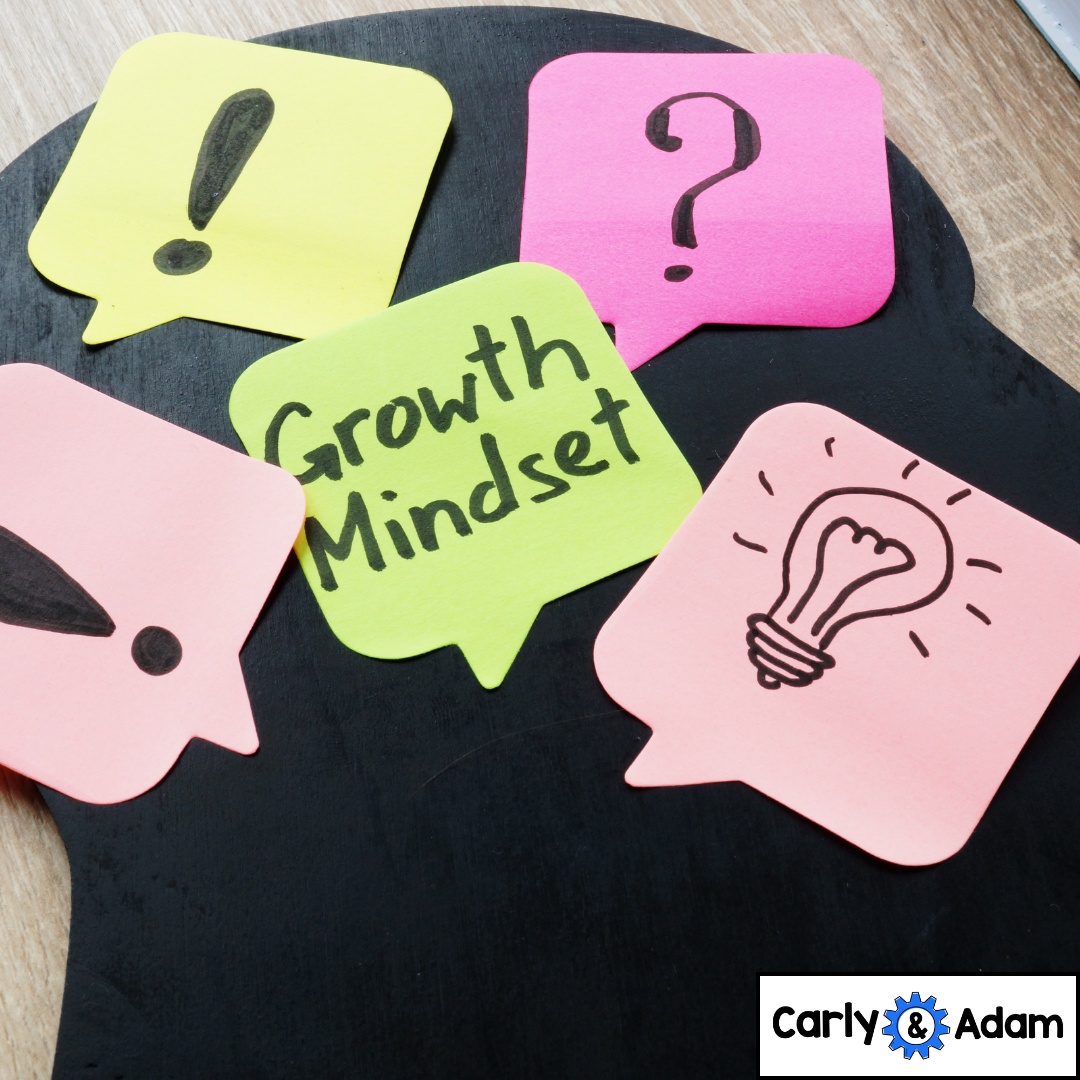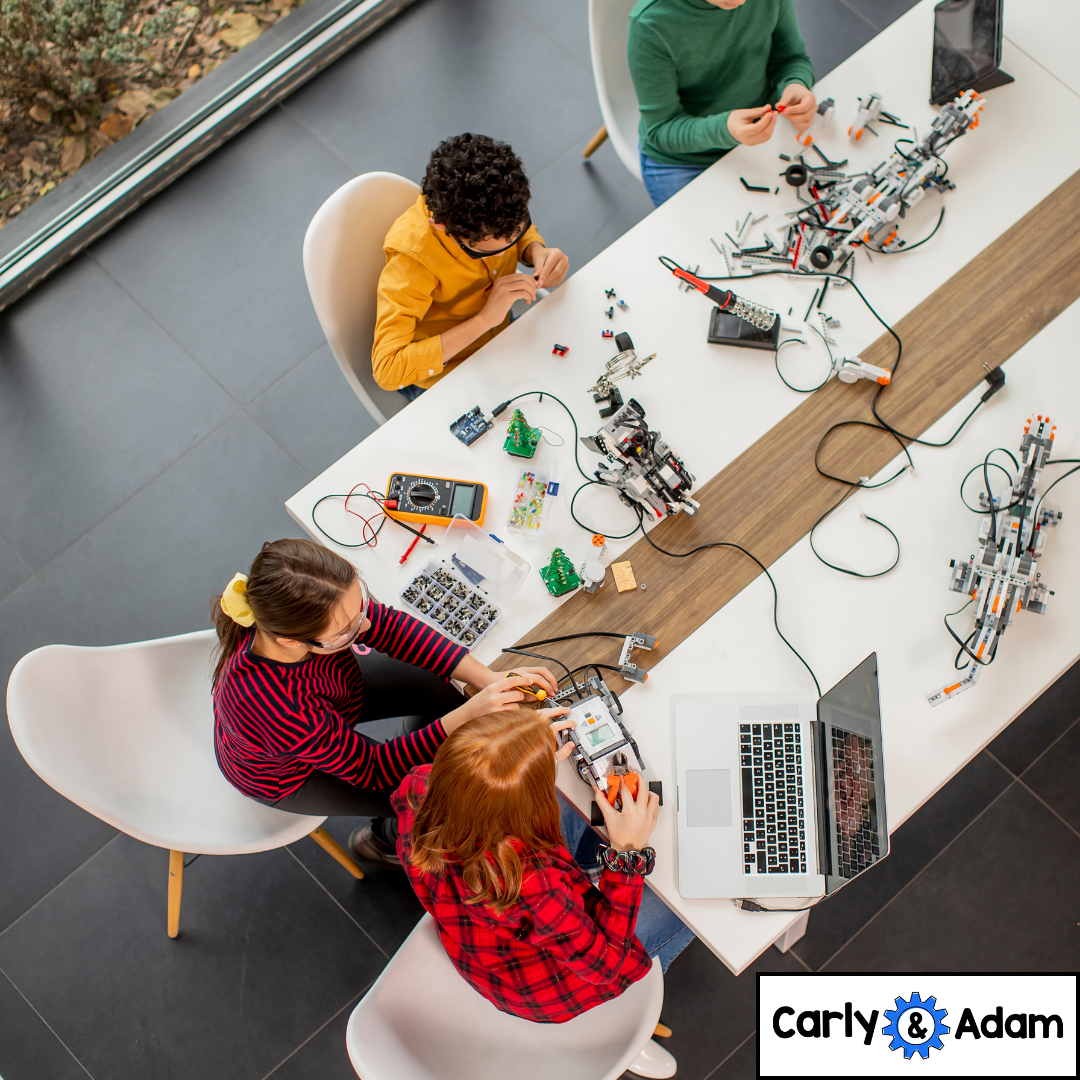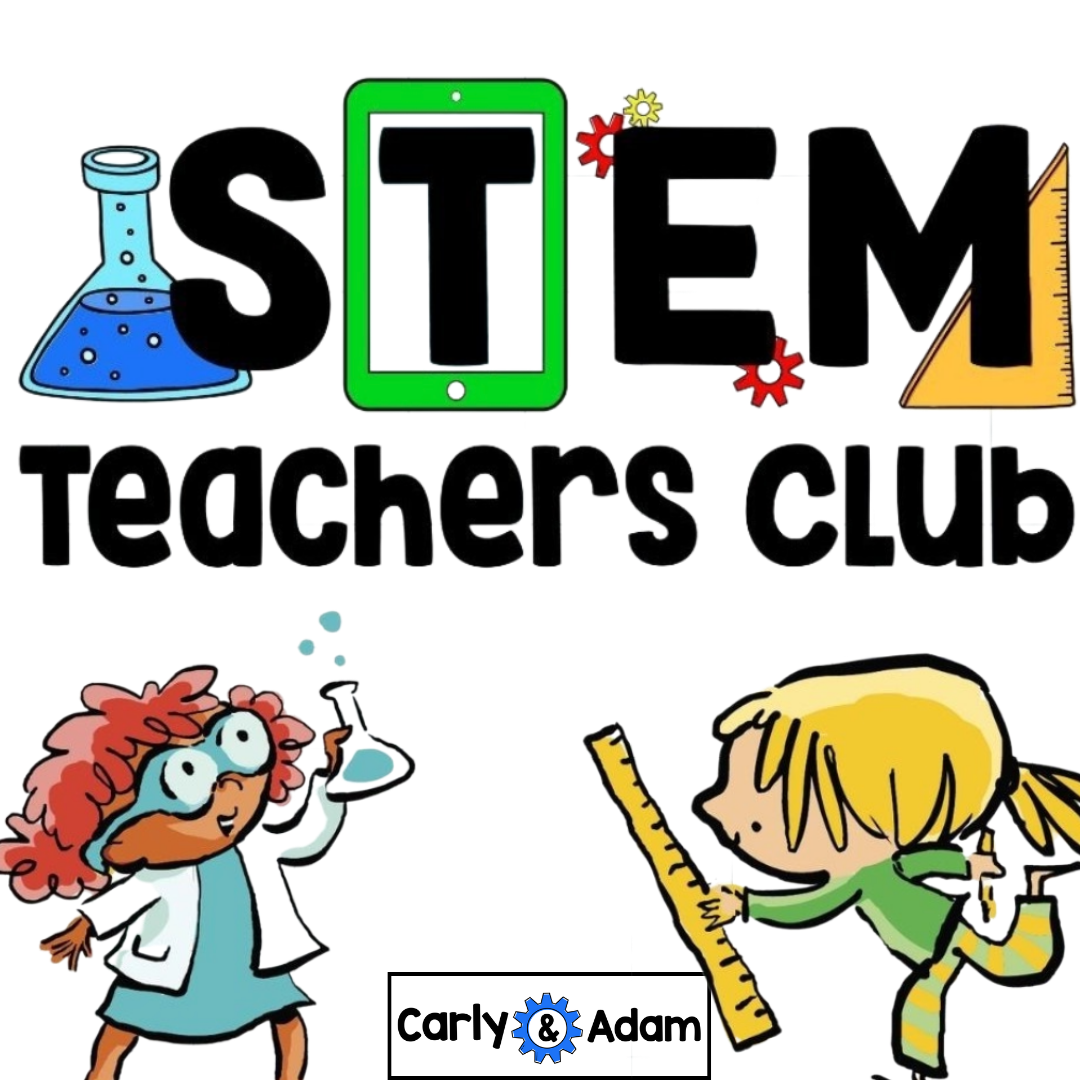The Top 5 Things You Need to Teach STEM
The following is a guest post from Dr. Jacie Maslyk.
Having a budget helps and access to materials and resources are great, but let’s face it, not all STEM spaces are created equal.
The good news is, you can engage your students in STEM with just a few simple things.
STEM doesn’t require a lot to get started, but here are our top 5 recommendations to help make teaching STEM easier.
Top 5 Tips and Tricks for Teaching STEM to Elementary Students:
Have Growth Mindset.
Find Your STEM PLN.
Use Engaging Materials.
Utilize Organizational Systems.
Join the STEM Teachers Club.
1. Have Growth Mindset
In the STEM space, it is important to have a growth mindset, for both educators and students. This mindset means that we understand and accept that failure is a part of the learning process.
In STEM classrooms, we teach students the engineering design process, helping them to experience the way that engineers use this cyclical process to design, fail, and try again.
This can be a tough lesson for young engineers to learn, but with guided practice and support, you can foster a growth mindset in the classroom. There are several great children’s books that can encourage critical thinking, problem solving, and perseverance.
The more your learners begin to develop these skills and learning dispositions, the better they will be able to successfully navigate STEM experiences.
2. Find Your STEM PLN.
If you haven’t realized the power of a professional learning network, then now is the time! There are a variety of social media platforms that can connect you with other STEM educators. Whether you prefer Twitter, Instagram, Facebook, these tools can help you build a network of support and knowledge.
Connecting to a network of STEM educators can not only provide ideas for lesson content and ideas for tools and materials, but also creative inspiration.
Your PLN platform is a place where you can ask questions, view images and videos, and find resources. Connecting on social media may help you to find out about upcoming conferences or grant opportunities!
The people in your PLN can be a sounding board for bouncing around new ideas, planning family and community engagement, or brainstorming fundraising ideas.
When you surround yourself with a powerful PLN, you increase your global connections, as well as access to increased opportunities for your students.
3. Use Engaging Materials.
From robotics to cardboard to 3D printing and Legos, your students will enjoy working with different types of materials in the STEM space. Offer opportunities for students to figure out the activities and materials that they enjoy working with.
Maybe your students are really into engineering structures, then choose a variety of building materials that will allow them to tinker and create. Maybe they enjoy coding or magnets or circuits. Connect them with the materials that will help them to pursue what they are passionate about.
It is important to create a balance between consumables (simple materials that can be used up quickly) and non-consumables (items that can be used over and over again). If you aren’t sure what to choose for your space, check out this post.
Be sure to observe your students to determine what materials they are most interested in.
Don’t invest a ton of money into fancy technology and over-priced kits if your students are really interested in using recyclable materials.
Work to design lessons that will immerse students in materials that will push their thinking and advance their knowledge in STEM.
4. Utilize Organizational Systems.
Whether it’s a way to organize your art supplies or a method for storing your robots, you will need systems for using all of the engaging materials in your classroom. Dollar store bins, stackable crates, and rolling carts are helpful for organization. Think about places to store general classroom supplies, as well as specialized tools.
Consider ways to house student projects, ones that are finished and ones that are “in process”. Figure out ways to manage cords, chargers, and small component parts for all of the activities that happen in your STEM space.
Don’t just create organizational systems for your own sake.
Develop systems that make sense WITH your students so that they will gain a sense of ownership in the classroom. It is important for them to understand why and where we put the hot glue guns and how to charge the Spheros when they are finished using them.
5. Join STEM Teachers Club.
Look no further for hundreds of lesson plans and design challenges perfect for the elementary classroom. A subscription to the STEM Teachers Club offers so many ready-to-use resources.
Whether you are a STEM lab teacher or a classroom teacher, the membership provides you with access to creativity challenges, engineering design projects, and hands-on, literature-based lessons.
In addition, as a member of the STEM Teachers Club, you will have access to professional development opportunities, including two online educational summits each year.
These five things serve as a strong foundation to get you started with STEM. Beginning with the right mindset, incorporating some engaging materials, and adding in some organization are great first steps.
Build up your network of STEM support and get access to a comprehensive online resource and you are on your way!
Have more questions or need additional resources?
Download our Free STEM challenges from our Free STEM Resource Library.
Join our Free Facebook Group.
For more STEM ideas, inspiration, and collaboration with other STEM teachers be sure to join our FREE Facebook group Elementary STEM Teachers with Carly and Adam!
We hope you have found this blog post helpful. To stay connected with Carly and Adam's teaching tips and classroom freebies be sure to follow us on Facebook, Pinterest, Teachers Pay Teachers, and subscribe to our blog!
An educator for the last 23 years, Dr. Jacie Maslyk, has served as a classroom teacher, reading specialist, elementary principal, and assistant superintendent. She is the author of STEAM Makers: Fostering Creativity and Innovation in the Elementary Classroom, Connect to Lead: Power Up Your Learning Network to Move Your School Forward (ISTE), Remaking Literacy: Innovative Instructional Strategies for Maker Learning and Unlock Creativity: Opening a World of Imagination With Your Students. You can read more on her blog, Creativity in the Making, at www.jaciemaslyk.blogspot.com. Connect with Jacie on Twitter @DrJacieMaslyk or email her at jaciemaslyk@gmail.com .







